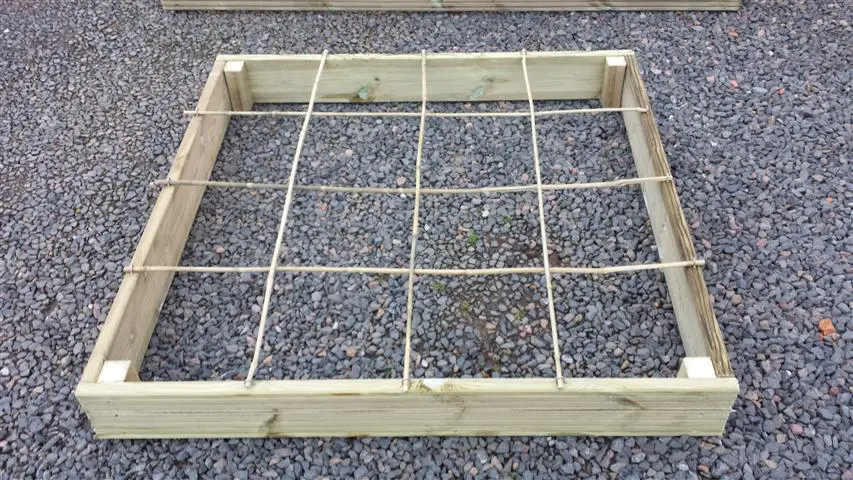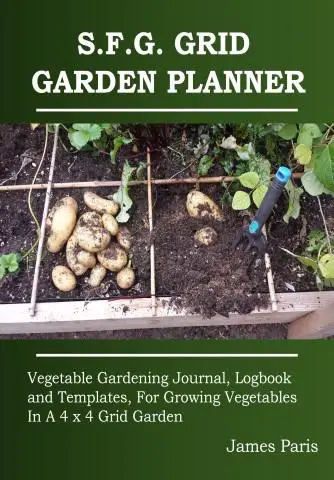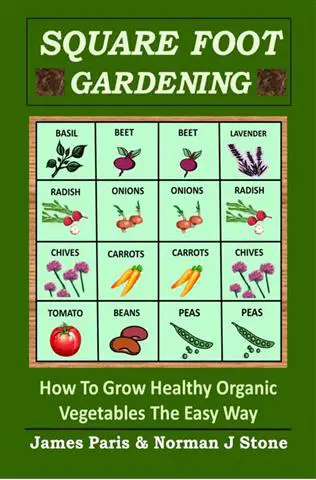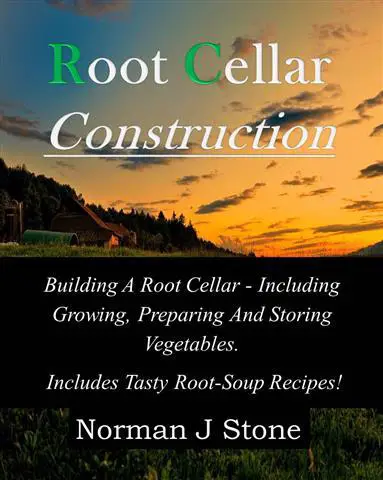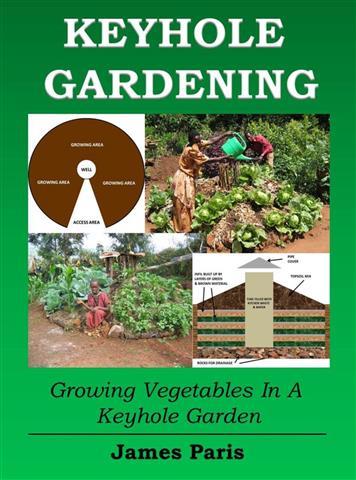Raised bed gardening is perhaps the best known of all the no-dig gardening methods used right now especially for growing vegetable crops. However combined with the Square foot garden method, this is really a game-changer for many first-time gardeners especially.
Designed especially for the gardener with limited space in mind, the square foot garden is the natural choice for many who want to get the best harvest possible from a very limited space.
Can you do a Square Foot Garden without raised beds?
In short – YES it is possible to grow vegetables using a variation of the square foot concept, but planted directly into the soil without the use of a raised bed structure. This is a garden concept known as Grid Gardening, and has been a popular way to grow vegetables for many years.
To grow veggies in a grid garden is simply to separate your growing area into a grid pattern forming squares, and then planting out your plants according to the parameters and ambitions you set – similar in fact to actual Square foot gardening.
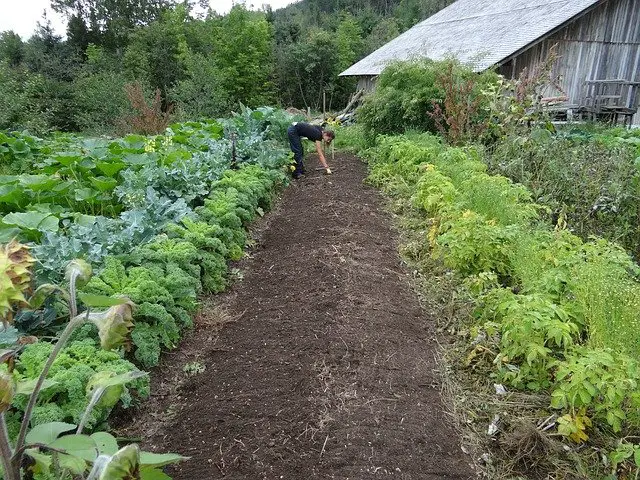
However, this is in fact not the same as Square Foot Gardening – a point that many folks do not seem to fully grasp. SFG – as it is known – is not just growing plants in a grid in raised beds. (It’s easier using this template ) It is actually a full-blown, stand-alone concept and method to grow vegetables in a 4 x 4 square space.
) It is actually a full-blown, stand-alone concept and method to grow vegetables in a 4 x 4 square space.
To clarify a little further, there are 5 main things that make up the SFG – it’s not all about grids!
- SFG Framework: This is a frame (usually timber construction) measuring 4 x 4 and divided clearly into 16 squares by canes, string, or narrow wooden strips. Like this example on Amazon.

- Special Infill material: This is essential and marks the difference between growing direct into the ground or using a SFG special mix. Using a special mix of compost, vermiculite, and topsoil, ensures a weed-free nutrient-rich growing environment that virtually guarantees the best results.
- Planting by numbers: There is a definite focus on the numbers of plants to grow per square
 that will get the best results overall in a SFG.
that will get the best results overall in a SFG. - Rotational planting: The SFG is kept growing throughout the season by a rotational planting (Succession planting) method that ensures that as one crop comes to harvest, another complimentary crop will take its place in the square. This means that all the squares are occupied throughout the growing season.
- Easy maintenance: The idea behind the special mix in a SFG is that it is easy to turn over meaning no heavy tools involved. The 4 x 4 frame means that the area is easily accessible from all sides of the frame. There is also minimal weeding required as it is not loaded with weed seeds.
The actual term ‘square Foot Garden’ was coined by Mel Bartholomew in the early 1980’s as he promoted the method using the points mentioned above. However the idea of growing vegetables using a grid system in a traditional garden layout is a centuries-old method for making best use out of whatever growing area is available.
Anything other than a concept that involves all of the above is NOT a square foot garden, but if you add a framework to any growing area then you have in effect a ‘Grid Garden’ that may or may not, include some or all of the steps that make up an actual SFG.
Grid gardening in a traditional vegetable plot:
Even though you may not be using raised beds, it is nevertheless essential to mark out the growing area where you wish to lay out your own grid garden.
This is basically to enable access to your vegetables for general care and maintenance, and also to simply highlight the area itself and create a more organised form of vegetable growing.
As for the actual grids themselves. Sizes do vary, but sticking to the SFG theme or 12 inch squares. I find it is best to make sure my rows are not more than 4 foot wide or 4 squares.
The lengths of the rows can vary, but if you make them too long then you will find you have to step onto them at some point to get to the other side when weeding etc. For this reason I tend to make the rows with a pathway between every ten feet, so that I am not compacting the growing area by stepping on it.
Square Foot vs Traditional garden:
In terms of produce volume for the area planted, and for overall ease of use for the home gardener, there is no doubt that the SFG method is the way to go for most householders with a limited garden space.
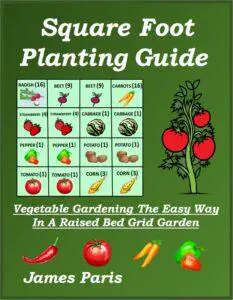
This is mainly owing to the nutrient-rich growing medium that has been created for the traditional SFG. This unfortunately does not apply to a grid garden that is set up in a traditional ‘row’ where reliance on good topsoil will largely determine the results.
Of course if the soil is amended with good compost and vermiculite or pearlite added for friability and nutrient retention, then results may well equal that of a good SFG.
or pearlite added for friability and nutrient retention, then results may well equal that of a good SFG.
In terms of general labour needed for on-going plant health, the SFG wins hands-down as it is easy to weed out even by hand – and there is no heavy digging required.
This is in comparison to a traditional garden plot that needs dug over with heavy tools to loosen up the soil, and where weeding is an on-going time-consuming chore for most people.
How many plants to a square foot grid?
Notwithstanding the quality of your growing medium, there are recommended vegetable plant numbers for a square foot garden grid system. This chart below are as follows per 12 inch square and also gives the approximate days to harvest after germination of the seeds.
system. This chart below are as follows per 12 inch square and also gives the approximate days to harvest after germination of the seeds.
| Plants | Approx Days to Harvest | No Per Square |
| ASPARAGUS (after shoots appear) | 14-21 | 1 |
| BASIL | 40-45 | 4 |
| BROCCOLI | 85-110 | 1 |
| BEETS | 50-70 | 9 |
| BEANS (pole) | 70-80 | 4-8 |
| BRUSSELS SPROUTS | 85-100 | 1 |
| CABBAGE | 90-100 | 1 |
| CAULIFLOWER | 85-110 | 1 |
| CARROT | 70 | 16 |
| CELERY | 60-65 | 9 |
| CORN | 80 | 3 |
| CHIVES | 80 | 16 |
| CUCUMBER | 55 | 2 |
| DILL | 65-70 | 1 |
| EGGPLANT (Aubergine) | 110-120 | 1 |
| GARLIC | 90-100 | 4 |
| LETTUCE | 40-80 | 4 |
| LEEK | 100-125 | 9 |
| MINT | 30-45 | 1 |
| ONIONS | 95-110 | 4 |
| OREGANO | 50-60 | 1 |
| PARSELY | 80-90 | 4 |
| PEAS | 70-80 | 8 |
| PEPPERS | 70-80 | 1 |
| POTATO | 80-100 | 1 |
| RADISH | 28 | 16 |
| ROSEMARY | 85 | 1 |
| SAGE | 60-90 | 1 |
| STRAWBERRY | 60-90 | 4 |
| SCALLION (Spring Onion) | 60-70 | 16 |
| SPINACH | 45-50 | 9 |
| SQUASH | 85-90 | 1 |
| TOMATOES | 70-75 | 1 |
| WATER MELON | 80-85 | 1 |
| ZUCCHINI (courgette) | 80 | 1 |
- 1 plant per square = Brussels sprouts, Cabbage, Cauliflower, Dill, Eggplant, Mint, Oregano, Peppers, Potato, Rosemary, sage, Squash, Tomato, Water melon, Zucchini.
- 2-4 plants per square: Corn, Cucumber, Garlic, Lettuce, Onions, Parsley, Strawberry.
- 8-9 plants per square: Celery, Leek, Peas, Spinach.
- 16 plants per square: Carrot, Chives, Radish, Scallion.
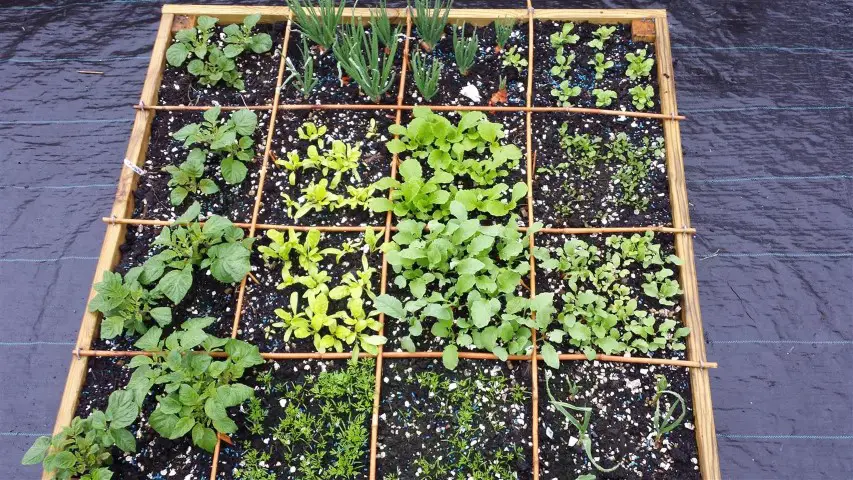
The bottom line is that square foot gardening without raised beds is indeed possible, albeit in a slightly different way using a traditional row garden system but incorporating a grid system. Strictly speaking however it is NOT a true SFG, and so the results are likely to be less productive overall.
is indeed possible, albeit in a slightly different way using a traditional row garden system but incorporating a grid system. Strictly speaking however it is NOT a true SFG, and so the results are likely to be less productive overall.
That said; with good topsoil and the correct care given, it is still an efficient way to organise your vegetable gardening efforts to get the best ‘bang for your buck’ and put your own home-grown food on the table.

